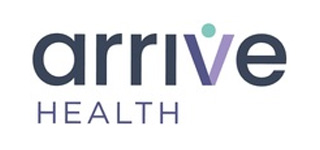Gauss Surgical, a health technology company, announced that a new study published in the International Journal of Obstetric Anesthesia concluded that the use of the company’s Triton system to monitor maternal blood loss during labor and delivery was associated with improved patient outcomes and cost savings. Researchers at Mount Sinai Hospital (New York, NY) studied over 7,600 deliveries and concluded in “The association between the introduction of quantitative assessment of postpartum blood loss and institutional changes in clinical practice: an observational study” (Katz D, et al.) that the systematic monitoring of blood loss with Triton was associated with improved recognition of postpartum hemorrhage, earlier intervention to control bleeding and cost savings when compared with visual estimation of blood loss.
“This study demonstrates that efficiently obtaining accurate, real-time blood loss information is critical to the successful implementation of a stage-based hemorrhage protocol,” said Daniel Katz, MD, Director of Obstetric Anesthesia Research at Mt. Sinai Hospital and the study’s lead author. “The Triton system helped us detect hemorrhages earlier and enabled our providers to deliver better patient care.”
Researchers used the Triton system to monitor blood loss in all deliveries (vaginal and cesarean, n=3807) at Mount Sinai Hospital from August 2017 through January 2018 to support the institution’s stage-based hemorrhage protocol. When they compared outcomes for these patients with deliveries during the same period in the prior year (n=3811) during which blood loss was estimated visually, the authors found that the Triton group was associated with:
- Improved Hemorrhage Recognition:
- Vaginal: 2.2% (Triton) vs. 0.5% (Control), P < 0.001
- C-Section: 12.6% (Triton) vs. 6.4% (Control), P < 0.001
- Changes in Patient Management:
- Vaginal: Transfusions were more likely to be given in the delivery room 53% (Triton) vs. 29% (control), P = 0.046 than later in the hospitalization
- Vaginal: Increased use of secondary uterotonics, 22% of patients (Triton) vs. 17.3% (control), P < 0.001
- C-Section: Reduction in mean transfusion dose, 1.90 units (Triton) vs. 2.52 units (control), P = 0.043
- Cost Savings:
- The annualized cost savings totaled $209,228, of which $172,614 was from laboratory costs and $36,614 from blood bank costs. These direct cost savings alone represented a 152% return on investment versus the acquisition cost of the Triton system.
- This latest study builds on earlier publications, including:
- A 2018 study of 2781 cesarean sections published in the American Journal of Perinatology, which found Triton was associated with improved hemorrhage recognition, reduced transfusion dose and shorter hospital stays.
- A 2017 study of approximately 400 burn surgeries published in the Journal of Anesthesia & Clinical Research, which concluded that Triton was associated with reduced transfusion dose.
- A 2017 study in the American Journal of Perinatology, which found that Triton was significantly more accurate than both visual estimation and gravimetric quantification of blood loss in cesarean sections.
“With our AI-enabled Triton platform, Gauss is focused on improved management of postpartum hemorrhage, which is the leading preventable cause of maternal morbidity and mortality in the United States,” said Siddarth Satish, founder and Chief Executive Officer of Gauss. “We are thrilled with these results from Mount Sinai, which highlight how Triton is helping our customers deliver better outcomes for mothers.”
Dr. Katz will present the study results and experiences with implementation of the Triton system at Mount Sinai Hospital at a webinar hosted by Gauss Surgical on Wednesday, July 24. Sign up here: https://qlm.infusionsoft.app/app/page/gausswebinar-july-2019.



